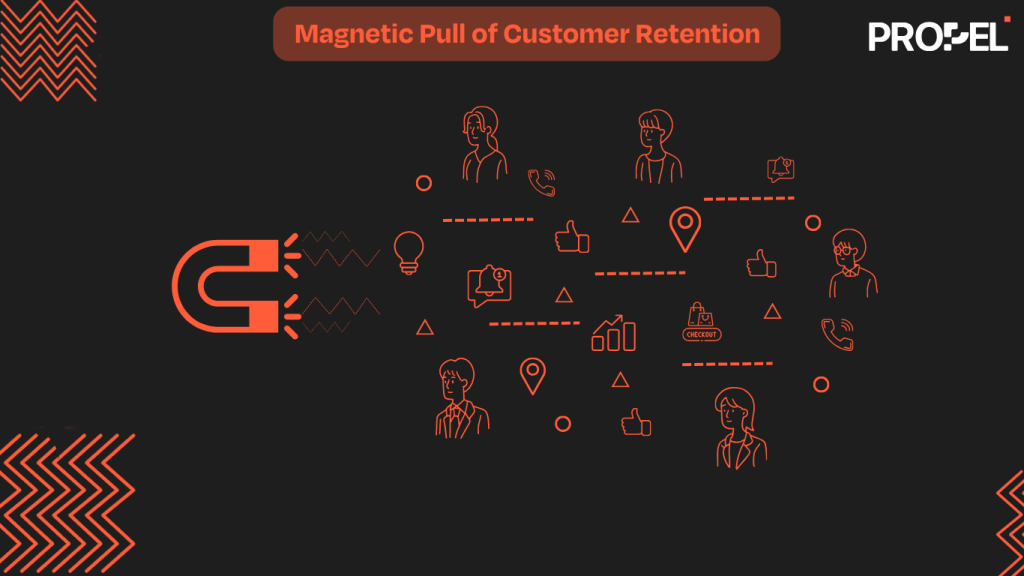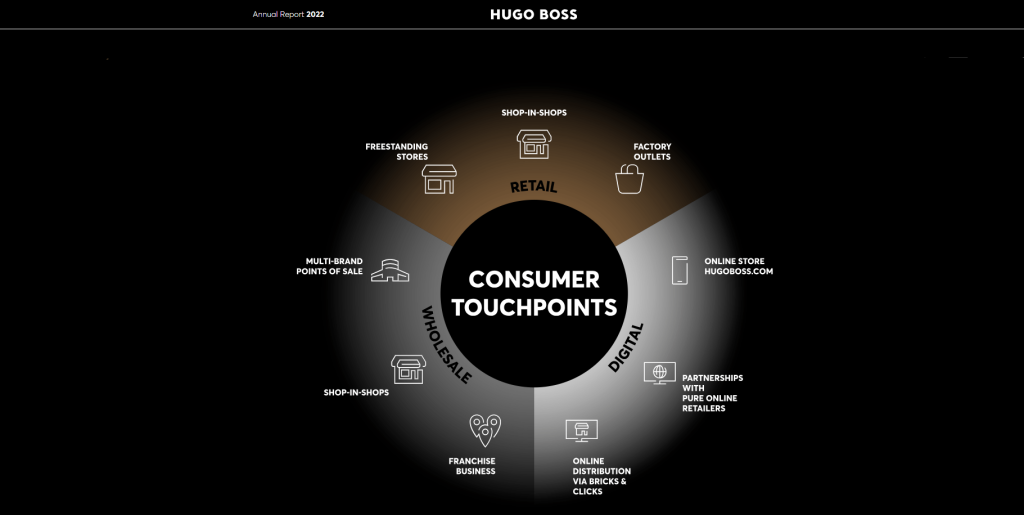In today’s highly competitive digital landscape, selecting the right marketitng campaign is crucial for businesses looking to increase customer retention rates. With the digital marketing industry projected to reach $786.2 billion by 2026, brands must navigate a vast array of options to effectively engage their target audience and drive long-term loyalty. A well-crafted marketing campaign not only promotes specific products or services but also aligns with the brand’s values, resonates with the target audience, and ultimately contributes to higher retention rates.
The importance of selecting the right marketing campaign cannot be overstated. Nearly 50% of marketing campaigns fail to make an impact because of poorly chosen strategies. A successful campaign has the power to capture the attention of potential customers, foster emotional connections, and create lasting brand loyalty. On the other hand, a poorly executed or misaligned campaign can lead to disengagement, brand confusion, and even customer churn. Therefore, it is essential for companies to carefully consider their target audience, business objectives, and available resources when developing their marketing strategies.
In this article, we will delve into the key factors that companies should consider when choosing the right marketing strategies and provide real-life examples of successful campaigns that have garnered audience interest and driven increased sales. By understanding the importance of customer segmentation, exploring various types of marketing campaigns, leveraging customer data management, and measuring success, brands can make informed decisions that lead to higher retention rates and long-term business growth.

The Art Of Customer Retention
Effective marketing campaigns begin with a deep understanding of the target audience. Customer Segmentation is a critical component of this process, as it allows brands to divide their audience into distinct groups based on demographics, behaviors, preferences, and other relevant factors. By tailoring marketing efforts to specific segments, companies can deliver more personalized and relevant experiences that resonate with individual customers.
The importance of customer segmentation lies in its ability to help brands identify and prioritize the most valuable customer groups. By analyzing data such as purchase history, engagement levels, and customer lifetime value, companies can allocate their marketing resources more effectively and develop campaigns that cater to the specific needs and preferences of each segment.
This targeted approach not only improves engagement but also fosters a stronger emotional connection between the brand and the customer, ultimately leading to higher retention rates.
Furthermore, customer segmentation enables brands to identify potential areas of growth and untapped market opportunities. By understanding the characteristics and behaviors of different customer segments, companies can develop new products, services, or marketing strategies that address unmet needs and expand their customer base. This data-driven approach to audience understanding is essential for creating effective marketing campaigns that drive long-term business success.
There are various types of marketing campaigns that brands can leverage to reach their target audience and achieve specific objectives. Some common examples include:
1. Brand Awareness Campaigns: These campaigns focus on increasing brand visibility and recognition among the target audience. By creating compelling content, leveraging social media, and partnering with influencers, brands can establish a strong presence and attract new customers.
2. Product Launch Campaigns: Designed to generate buzz and excitement around new product releases, these campaigns aim to drive initial sales and establish market presence. Tactics such as teaser ads, exclusive previews, and limited-time offers can create a sense of anticipation and urgency.
3. Social Media Campaigns: Leveraging the power of social media platforms, these campaigns engage audiences through interactive content, user-generated content, and influencer partnerships. By creating shareable and engaging content, brands can increase their reach and foster a sense of community among their followers.
4. Email Marketing Campaigns: Targeted email campaigns deliver personalized content and offers directly to the customer’s inbox, fostering a direct line of communication and driving engagement. By segmenting email lists and delivering relevant content, brands can nurture leads and encourage customer loyalty.
5. Content Marketing Campaigns: By creating valuable and informative content, such as blog posts, videos, and infographics, brands can establish thought leadership, build trust, and attract and retain customers. Consistent and high-quality content helps position the brand as an authority in its industry and provides value to the target audience.
To select the most appropriate marketing campaign, companies must leverage Customer Data Management effectively. By collecting, analyzing, and integrating data from various touchpoints, such as website interactions, social media engagements, and purchase histories, brands can gain valuable insights into customer preferences, behaviors, and pain points. This data-driven approach enables companies to make informed decisions about campaign strategies, messaging, and targeting.
Customer Data Platforms (CDPs) play a crucial role in this process by unifying customer data from multiple sources and creating comprehensive customer profiles. With a CDP in place, brands can segment their audience more effectively, personalize marketing efforts, and deliver consistent experiences across channels. By leveraging the power of customer data, companies can identify the most promising campaign opportunities and allocate resources accordingly, maximizing the impact on retention rates.
Moreover, customer data management allows brands to continuously refine and optimize their marketing campaigns based on real-time insights. By tracking key performance indicators (KPIs) and analyzing campaign data, companies can identify areas of improvement, test new strategies, and make data-driven decisions to enhance the effectiveness of their marketing efforts. This iterative approach ensures that campaigns remain relevant, engaging, and aligned with the evolving needs and preferences of the target audience.
To fully harness the potential of customer data management, brands must prioritize data quality, security, and privacy. Implementing robust data governance practices, such as data cleansing, standardization, and encryption, is essential to maintain the integrity and confidentiality of customer information. By building trust through responsible data management, companies can foster long-term customer relationships and enhance the impact of their marketing campaigns on retention rates.
To assess the effectiveness of a marketing campaign in increasing retention rates, it is essential to define and track key metrics. Some important metrics to consider include:
1. Customer Retention Rate: This metric measures the percentage of customers who continue to engage with the brand over a specific period, providing insights into the campaign’s impact on long-term loyalty. By tracking retention rates before and after the campaign, companies can gauge its effectiveness in reducing churn and fostering customer loyalty.
2. Customer Lifetime Value (CLV): CLV represents the total value a customer brings to the brand throughout their relationship. By tracking CLV, companies can evaluate the campaign’s contribution to long-term revenue and profitability. Successful campaigns should lead to an increase in CLV, indicating that customers are engaging with the brand more frequently and generating higher value over time.
3. Engagement Metrics: Metrics such as click-through rates, open rates, and social media interactions provide valuable insights into how well the campaign resonates with the target audience and drives engagement. High engagement rates suggest that the campaign content is relevant, compelling, and effectively capturing the attention of the target audience.
4. Conversion Rates: Measuring the percentage of customers who take desired actions, such as making a purchase or signing up for a loyalty program, helps assess the campaign’s effectiveness in driving conversions and retention. By tracking conversion rates across different customer segments and campaign touchpoints, companies can identify the most effective strategies and optimize their efforts accordingly.
5. Net Promoter Score (NPS): NPS is a metric that gauges customer loyalty and the likelihood of recommendation. By tracking NPS before and after the campaign, brands can evaluate the campaign’s impact on customer satisfaction and advocacy. An increase in NPS indicates that the campaign has successfully strengthened the emotional connection between the brand and its customers, leading to higher retention rates and positive word-of-mouth.
1. Hugo Boss’s Customer Retention Strategies
Hugo Boss excels in lifecycle marketing by leveraging customer data and MarTech to create personalized, seamless experiences. Their targeted campaigns use customer segmentation based on demographics, preferences, and purchase history, enabling tailored emails, product recommendations, and promotions. Hugo Boss integrates online and offline channels, delivering omni-channel personalization through features like AR virtual try-ons, loyalty recognition via sales associate tablets, and in-store fitting room tablets.
Their sophisticated loyalty program rewards engagement with perks like early access to collections, discounts, and VIP event invites, encouraging repeat purchases. Supported by connected marketing automation tools, Hugo Boss ensures consistent, personalized interactions across all touchpoints, meeting consumers’ growing expectations for meaningful brand relationships. A rewarding customer experience paves path for an unforgettable customer loyalty.

Description: HUGO BOSS runs its retention campaigns across multiple touchpoints (Source: Hugo Boss)
2. Spotify’s “Wrapped” Campaign
Spotify’s annual “Wrapped” campaign is a prime example of leveraging user data to create a highly personalized and engaging experience. The campaign provides each user with a detailed overview of their listening habits throughout the year, including top songs, artists, and genres. By tapping into the power of nostalgia and self-expression, Spotify encourages users to share their “Wrapped” results on social media, driving brand visibility and user-generated content.
The success of the “Wrapped” campaign lies in its ability to create a strong emotional connection between Spotify and its users. By highlighting the unique musical journey of each individual, Spotify demonstrates a deep understanding of its audience and their passion for music. The personalized insights and shareable content not only delight users but also foster a sense of belonging and loyalty to the platform.
Moreover, the “Wrapped” campaign serves as a powerful retention tool by reminding users of the value they derive from Spotify throughout the year. By showcasing the breadth and depth of the user’s musical exploration, Spotify reinforces the benefits of continued subscription and engagement. The campaign’s timing, typically released towards the end of the year, also creates a natural opportunity for users to reflect on their experience with the platform and renew their commitment for the upcoming year.
Selecting the right marketing campaign is a critical factor in driving customer retention and long-term business success. By understanding the target audience, leveraging customer data management, and measuring key metrics, companies can develop campaigns that resonate with their customers and foster brand loyalty.
As the digital marketing landscape continues to evolve, brands that prioritize customer-centric marketing strategies and data-driven decision-making will be well-positioned to build lasting relationships with their audience. By continuously refining their approach based on customer insights and campaign performance, companies can optimize their marketing efforts and drive sustainable growth through increased retention rates.
Ultimately, the key to successful marketing campaigns lies in the ability to connect with customers on a deeper level, deliver value, and foster a sense of belonging. By keeping these principles at the forefront of their marketing strategies, brands can create campaigns that not only acquire new customers but also retain them for the long haul.

Rushabh is a seasoned B2B growth and product marketing leader currently heading GTM strategy at Propel. With a strong foundation in strategic planning and execution, he is known for his analytical approach and commitment to impactful, data-driven marketing. An alumnus of IIT Madras and IIM Shillong, Rushabh brings valuable expertise in driving market expansion with a focus on continuous learning and improvement.
Got Questions? We Have Answers!
Selecting the right marketing campaign is essential for increasing customer retention as it helps businesses engage with their audience in a meaningful way. A well-crafted campaign fosters brand loyalty, strengthens emotional connections, and reduces churn.
Customer segmentation involves dividing your audience into distinct groups based on factors like demographics and behaviors. This approach allows for more targeted and personalized marketing campaigns, which are crucial for enhancing customer engagement and boosting retention.
Successful customer retention campaigns can include brand awareness campaigns, product launches, social media campaigns, email marketing, and content marketing. Each type helps businesses engage customers at different touchpoints, ensuring lasting loyalty.
Leveraging customer data management allows businesses to collect and analyze customer behavior across various touchpoints. By understanding preferences and pain points, companies can tailor their marketing campaigns to resonate more effectively with their audience, driving higher retention rates.
Key metrics for assessing retention campaigns include Customer Retention Rate, Customer Lifetime Value (CLV), engagement metrics (click-through and open rates), conversion rates, and Net Promoter Score (NPS). These indicators help evaluate the effectiveness of campaigns and guide adjustments for improved performance.


Propel specializes in customer lifecycle marketing, helping consumer brands boost retention & reduce churn with tailored strategies and our AI-augmented platform, AURA.
Book a call with our experts and get started today!